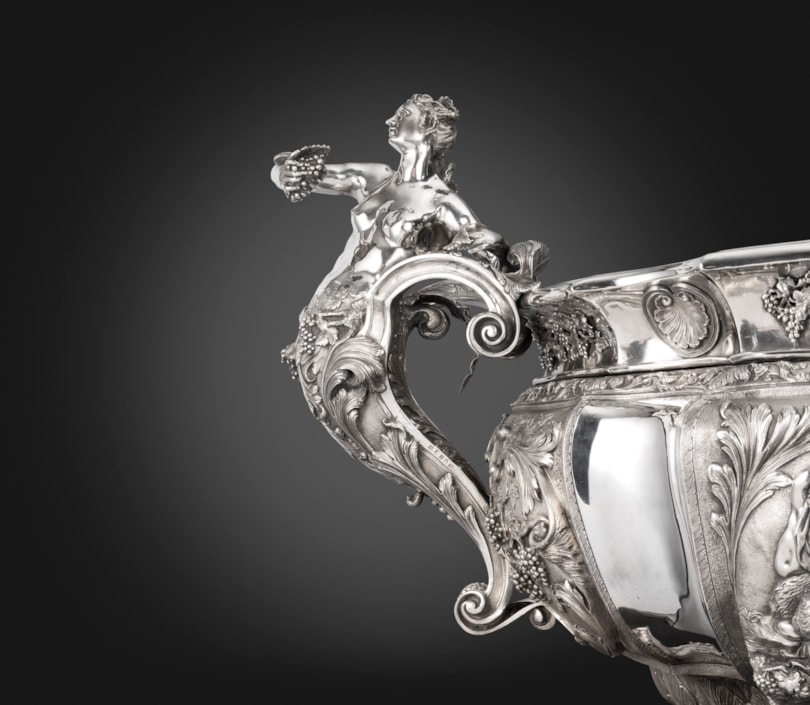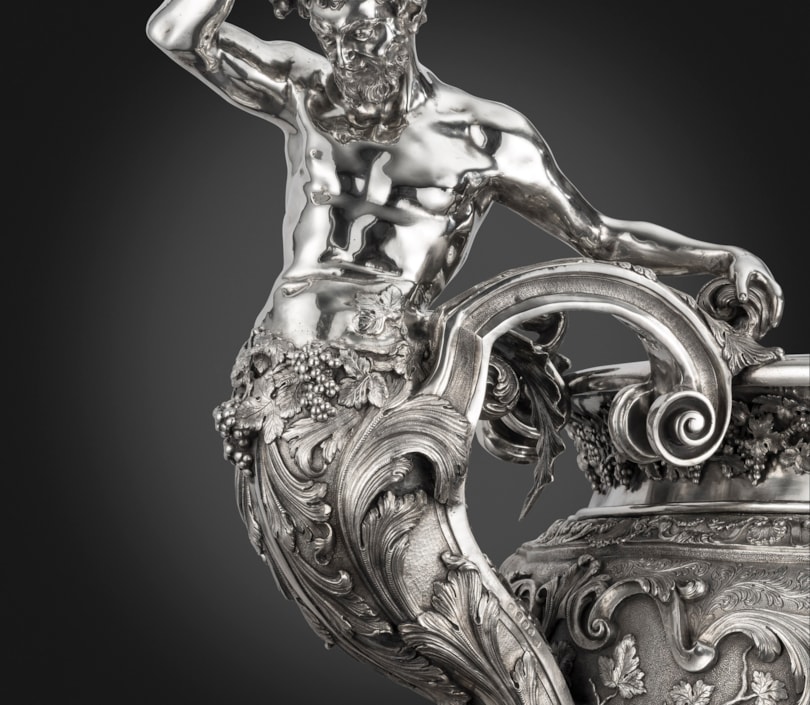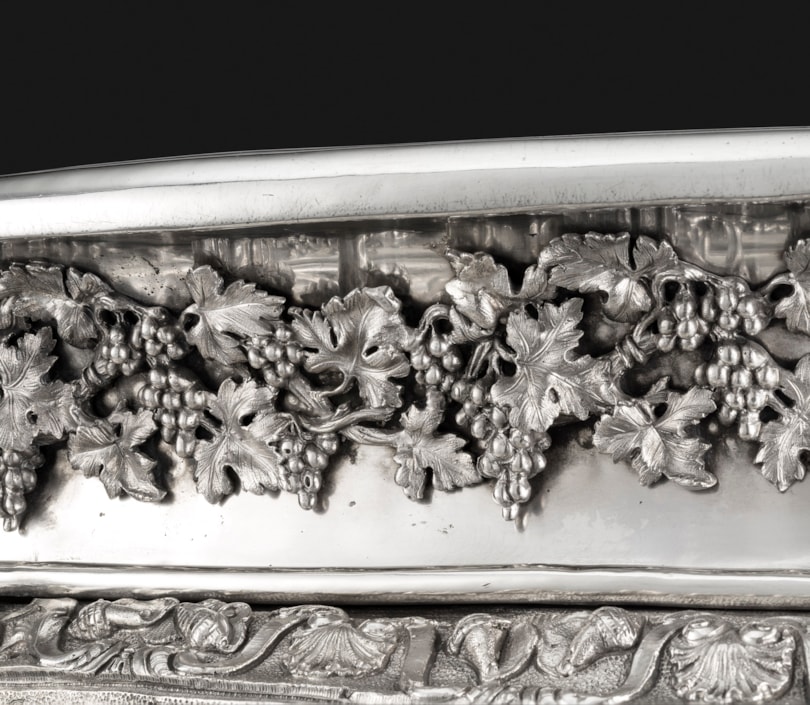Read more about this magnificent piece in our most recent blog.
The largest piece of sterling silver commissioned since the creation of the Jerningham - Kandler cistern, London, 1734 residing in St Petersburg at the Hermitage Museum.
The oval wine cooler, waisted below the rim, with large oval medallions. The bowl rests on four seated panthers, teeth bared, each with one paw on a bunch of grapes. The panthers wear collars and are tied to the bowl with chains. Heavy S-scroll handles with herms of a faun and the bacchante, both holding bunches of grapes and with vines and around their hips. The upper parts of the scrolls have a profiled edge while the lower curves - forming the bottom or stand of the herms - are decorated with acanthus leaves. Attached to the sides of the bowl are relief bacchic scenes with putti. In the first, putti surround a chariot pulled by panthers in which sit two more putti, one of them the young Bacchus, with a figure of Cupid hovering above; the second shows putti dancing, flanked by a group of putti fighting and others drinking and playing with a panther. All parts of the wine cooler were cast from moulds and then raised and chased where necessary, before being soldered together. Bolts were used to fasten the large parts: the handles to the bowl, the bowl to the panthers, etc. The medallions are much thicker than the side walls of the bowl itself, since they have to accommodate what is at times very high relief.
This is sterling silver cistern inspired by the magnificent silver wine cistern commissioned by the English banker and silversmith Henry Jernegan Jerningham (ca. 1688–1745/6) for his client Littleton Pointz Meynell (ca. 1695–1752) who was desirous to have the "largest and finest silver cistern that ever was or could be…"
This wine cistern is modelled after the George II example made in London, 1734 by Kandler. Its inspiration can be traced to a sketch of the design honouring the wine god Bacchus and was done by the antiquarian and engraver George Vertue (1684-1756) and the wax models for the figures were executed by the Flemish-born English sculptor John Michael Rysbrack (1694–1770). The actual cistern, now in the Hermitage Museum, St. Petersburg, was the work of the silversmith Charles Frederick Kandler (act. 1720–1770s). When this remarkable piece was finally ready in 1734, Meynell had changed his mind and Jernegan was stuck with the extravagant object for which he failed to find a buyer. Offered as first price in a lottery of 1739, the wine cistern entered the collection of Empress Anne of Russia by the following year.
The History of The Jerningham - Kandler Wine Cistern
The original was commissioned 1734–5 in London by Henry Jernegan Jerningham of Russell Street, a London goldsmith-banker, whose client, Littleton Poyntz Meynell, wanted to have the largest ever silver wine cistern ever to have been made. Jernegan employed the sculptor John Michael Rysbrack to model the Bacchanalian scenes on the bowl, the crouching panthers beneath and the satyr handles. It took a team of silversmiths, chasers and engravers four years to make and weighed 8.000 ozs. The leading silversmith, whose mark is struck on the cistern, was the German immigrant, Charles Kandler probably Carl Rudolf Kaendler, elder brother of the famous Meissen porcelain modeller. When asked by Henry Jernegan to pay the final bill for the cistern, however, Meynell refused and in 1737, Jernegan offered the cooler as a lottery prize. The smallest prizes in the lottery were specially struck medals about five or six shillings each. The winner, Major William Battine of East Marden, Sussex, appears to have sold the cooler to the regent Grand Duchess Anna Leopoldovna of Russia in 1738. Since 1743 the cooler has been in the Hermitage Museum, St. Petersburg.
In the electroplating of silver on copper copy was made during the Victorian era in 1884 in Birmingham, Elkington, and Co. in celebration of the original. This replica watch is in the Victoria and albert Museum. There is another electroforming copy in the Metropolitan Museum in New York, and in Queens Regiment silver collection. This is one of the few copies ever to be made in silver of the famous cistern.
You May Also Like



















































































